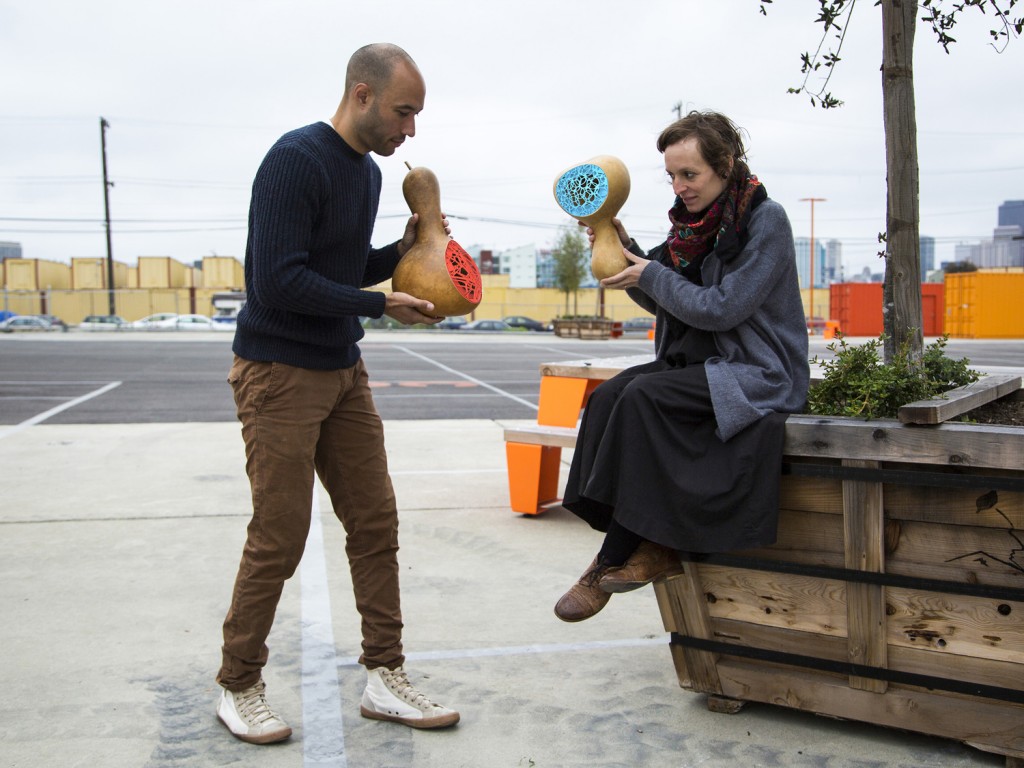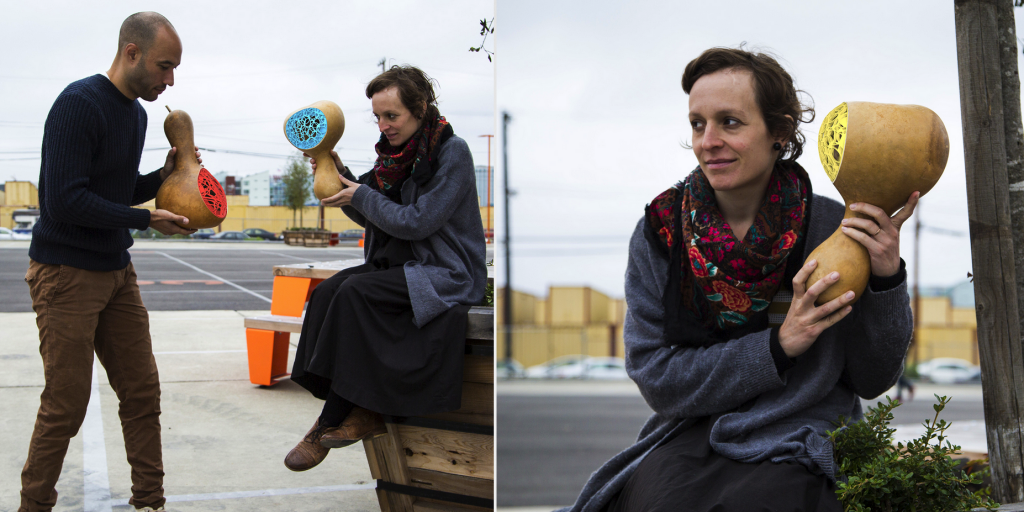
For one man, named Matt Pearson, you might define him as a designer, innovator, artist, and musician extraordinaire. He has come up with a really unique project, using 3D printing and a simple gourd.
Pearson, notes that gourds are actually the most ancient musical instrumental form, having been used within many cultures around the world as idiophones which are shaken or struck to create interesting vibrational sounds. His unique instruments, however, take a much more modern approach to creating music from these strange specimen of nature.
“These digital gourds are instruments that use motion data to control digital sound parameters,” Pearson explains.”Inside the organic gourd form are motion sensors, which track the movement of the gourd, and a speaker, which amplifies those movements as digital music. The instruments are easy for non-musicians to pick up and play immediately, blurring the lines between audience and performer.”
Pearson used 3D scanning technology in order to help create the speaker parts within. 3D scanning allowed him to capture the unique curvature and shape of each individual gourd. Then many of the parts are 3D printed to fit perfectly within.
“The missing part of the gourd is ghosted back as an algorithmically-tessellated, 3D printed part, a digital re-formation of the section of the gourd that was lost in this new union,” he explains.
What do you think about these gourd’acious instruments? Will we continue to see more and more creative thinking within the music industry, thanks to 3D printing technology? Discuss in the Gourd Instrument Forum thread on 3DPB.com. Check out the video below, showing these instruments in action
